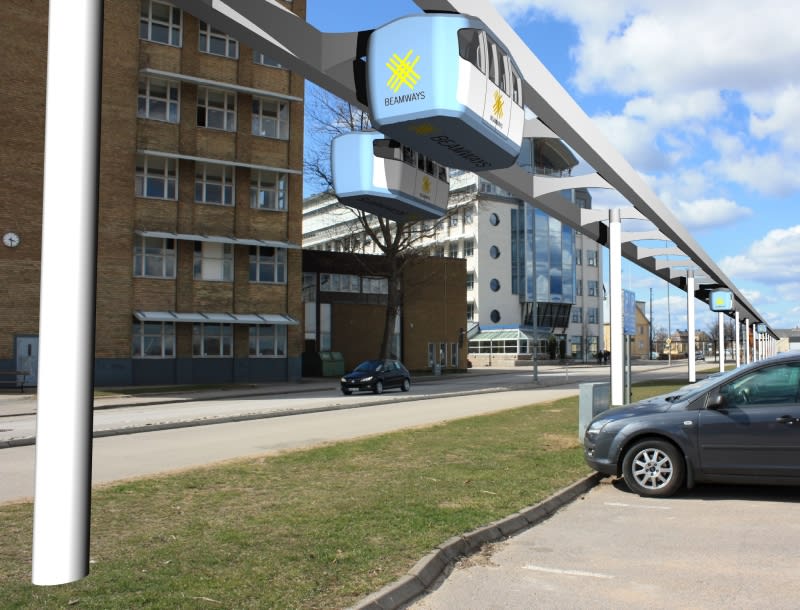Personal Rapid Transit (PRT) solves the long standing dilemma of passenger transportation by combining the advantages of the car and transit. Beamways is the only PRT optimized for low natural resource and energy consumption. With solar collectors on top of the guideway it can be self sufficient with energy.
The ideal passenger trip takes you rapidly and safely from where you are directly to where you want to go with good comfort and without requiring your attention.
The car excels in some of these aspects, including rapid speed and direct trip but is not very safe and requires your constant attention. Transit is slower, non-direct and only runs at specific times.
PRT offers each group of travellers its own vehicle for the trip, which takes them automatically directly to their destination. This gives rapid trips with good comfort at any time, without passengers having to drive. After the trip is complete the vehicle is available to take another group of passengers somewhere else. If the travel demand is not balanced vehicles will relocate automatically to pick up passengers at their origins.
To be able to reach sufficient capacity and speed with small vehicles they need to have a dedicated track without intervention of other traffic. This can only be achieved by elevating the track above ground. Thanks to the small vehicle size and weight this can be done at a reasonable cost and track cross-section.
The idea of PRT has been around for a long time but only in the recent years has computer and data communication reach a level of performance where the PRT concept can readily be realized. This has resulted in two operating PRT systems and two being built so far.
The PRT systems so far have not been engineered to minimize power consumption or raw material use. If PRT is deployed widely it is of course important to consider such factors.
The Beamways system uses several innovative means to achieve low energy and materials use. One is to use a track which is higher than it is wide, as this is best for getting structural stability from the material used. Another idea is to use steel wheels which almost halves the energy consumption (cf train wheels). Another idea is to adjust the pressure on the drive wheel depending on the available friction and traction requirements. Finally the vehicles run under the guideway allowing solar panels to be installed on top to harvest solar energy for the system.
Video
Like this entry?
-
About the Entrant
- Name:Bengt Gustafsson
- Type of entry:individual
- Software used for this entry:SolidWorks
- Patent status:pending





